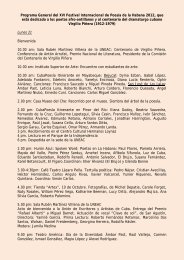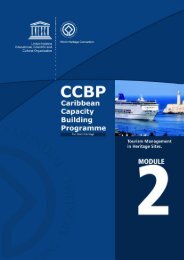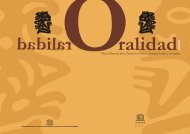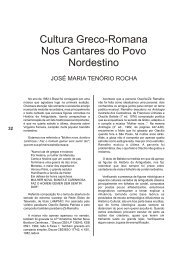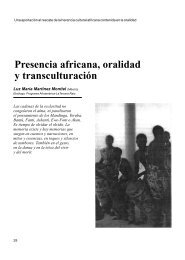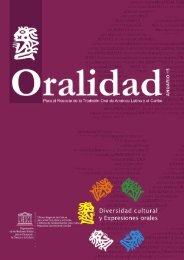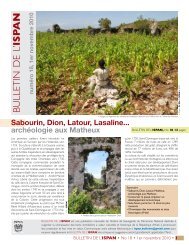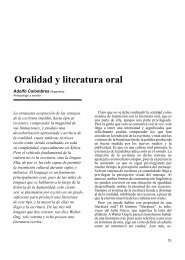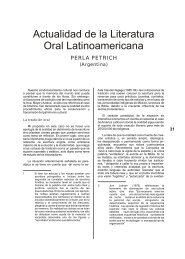Module 5: Management of Historic Cities - UNESCO: World Heritage
Module 5: Management of Historic Cities - UNESCO: World Heritage
Module 5: Management of Historic Cities - UNESCO: World Heritage
You also want an ePaper? Increase the reach of your titles
YUMPU automatically turns print PDFs into web optimized ePapers that Google loves.
MODULE 5<br />
<strong>Management</strong> <strong>of</strong> <strong>Historic</strong> <strong>Cities</strong><br />
LECTURE 2: Developing a management strategy: the<br />
planning<br />
Theme: This lecture addresses the value-led, integrated<br />
and holistic approach to management planning <strong>of</strong> historic<br />
cities, the characteristics <strong>of</strong> the process and its outcome (the<br />
<strong>Management</strong> Plan) and the methodology to prepare it.<br />
SUBJECTS<br />
1.The conservation planning process<br />
LEARNING OBJECTIVES<br />
•• Participants understand the need for and the benefits <strong>of</strong><br />
engaging in a conservation planning process.<br />
•• Participants understand which are the main elements <strong>of</strong> the<br />
conservation planning process.<br />
2.The <strong>Management</strong> Plan: definition, principles, objectives<br />
•• Participants understand what is a <strong>Management</strong> Plan, its<br />
principles and objectives.<br />
3.<strong>Management</strong> planning methodology<br />
•• Participants become aware <strong>of</strong> the steps to be followed to<br />
develop a <strong>Management</strong> Plan.<br />
OUTLINE OF SUBJECTS TO BE COVERED<br />
16<br />
1.The conservation planning process<br />
Too frequently, importance is attached to the outcome<br />
– the “plan” – while the process for achieving it is<br />
undervalued or overlooked. The benefits <strong>of</strong> the<br />
planning process go beyond <strong>of</strong> the outcome; it is the<br />
opportunity to:<br />
••Create a shared vision among staff responsible for<br />
the site and external parties who have an interest<br />
in the site;<br />
••Involve key players and strengthen relationships,<br />
negotiate conflicts and form alliances that will<br />
benefit the site;<br />
••Engage in transparent decision making: it makes<br />
the decision-making process open and clear to all;<br />
••Reassess, evaluate and synthesise information<br />
about a site;<br />
••Take into account the needs <strong>of</strong> future generations<br />
and your own.<br />
A planning process is a powerful tool for:<br />
•• Thinking and making decisions in a logical way<br />
•• Setting priorities by understanding what is really<br />
important about a site<br />
•• Explaining and justifying decisions<br />
•• Ensuring that the results <strong>of</strong> decisions are sustainable.<br />
––The planning process will serve as a road map<br />
for making good decisions and managing<br />
problems.<br />
––Comprehensive planning for cultural resource<br />
management (conservation management<br />
or site management) consists <strong>of</strong> integrated,<br />
interdisciplinary approaches to the preservation<br />
<strong>of</strong> the built environment developed to address<br />
the changing conditions <strong>of</strong> contemporary<br />
society.<br />
––Integrated planning methodologies have been<br />
developed by ICOMOS Australia, the US National<br />
Park Service, Parks Canada, English <strong>Heritage</strong>,<br />
and many NGOs. These plans are constructed<br />
according to an holistic approach where<br />
conservation policies are integrated and take<br />
into account a series <strong>of</strong> issues (e.g. availability<br />
<strong>of</strong> resources, environmental legislation, technical<br />
state <strong>of</strong> conservation) at different level and for<br />
different purposes.




